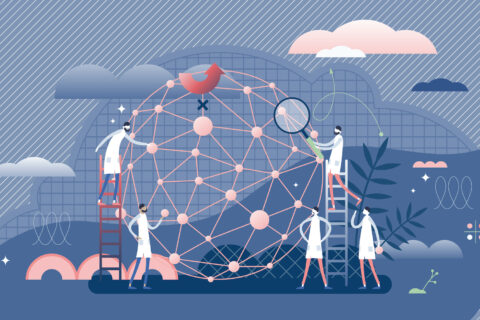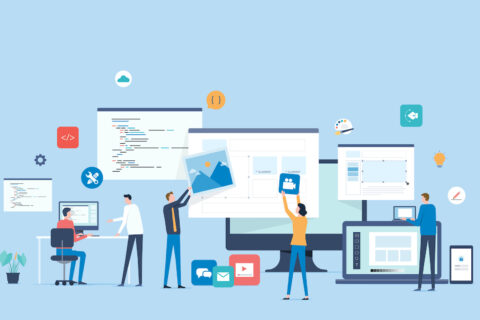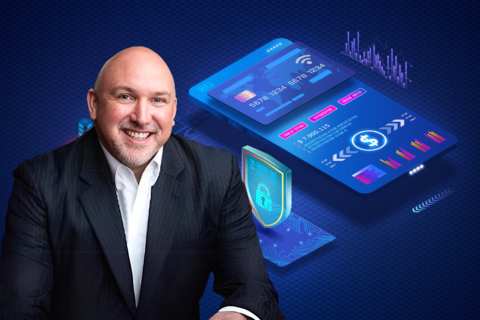The digital age has changed everything. Yet we still see businesses and brands — like Blockbuster, Kodak and others — that fell behind because they were married to their own way of thinking or too slow to adapt to the new reality.
[pullquote]”Digital demands new thinking, and the process of product development will need to adapt for the digital age… And when executed correctly, a great digital offering can not only enhance relationships with customers, but create new sources of revenue.”[/pullquote]Digital demands new thinking, and the process of product development will need to adapt for the digital age. For instance, there is now an interactive TV solution to transform Star Trek fans viewing experience from passive to interactive. Meanwhile, developers have made it possible for Adobe’s global salesforce to access their latest products anytime–anywhere. Also, a mobile platform designed to engage Olympics fans can take them along Team USA’s journey. And when executed correctly, a great digital offering can not only enhance relationships with customers, but create new sources of revenue.
A product becomes a solution when it solves a problem. But not all products can become solutions. To deliver a product that works, there are four key areas necessary for success:
- A defined value-driven product vision
- A product design for end users
- Features prioritized by impact
- Iterative and incremental improvements
Start With Why
Too often, companies receive an RFP (request for proposal) or a product description of what the client wants to build and how they would like it built. However, a successful solution should start with everyone understanding the problems the product will solve and the value it will provide; essentially everyone should clearly define the why. Creating your product vision (the “why”) will keep your team focused on features that can deliver the most value. Important questions to ask pre-design phase include: “What business problems are we trying to solve?” and “What success metrics should this product hit to drive the most value?”
Focus on the Customer
More often than not, product features are defined by the business team themselves, who are rarely the intended end users of the product. However, great products are designed with the end users’ needs, wants, and limitations in mind.
You do not have to spend significant time and money on qualitative and quantitative research, but you must understand consumer behavior triggers that lead to their engagement and encourage repeat use. Questions to ask at this point are “Who are our end users?” and “What are the emotional and tactical triggers that would bring them back again and again?”
Get Lean and Agile
In recent years, lean or agile development methodology has gained popularity within both large enterprises and startups. Both methods have proven effective for solving one of the biggest product development challenges: How can we be more responsive to the ever-changing needs of businesses and end users?
The answer lies in shorter production cycles, more development progress transparency, improved collaboration, stakeholder alignment, accurate time and budget estimates, and last but not least, a better quality product. These are just some of the many benefits of lean or agile development. But they are more than just processes; they are principles that if applied and executed correctly can fundamentally enhance workflow and end results — and the workflow culture itself.
When implementing lean product development, ask, “What features would make the most impact against key metrics?” And, “What features can we build with the least amount of effort to gain the most end user information?”
Incremental Innovation
There is no such thing as a perfect product. The products we have grown to love and use every day, from mobile phones to the cars we drive continue to evolve and address customer desires. The same goes for digital products.
Listen, learn, build and measure. This revolving cycle of product development focuses on a series of small improvements. This will improve the product’s competitive position over time, thus fostering innovation. A question to ask after you’ve built your product is: “Are we listening to users through continuous analytics and measurement, to improve the product?”
Developing a product that works is not like building a house. If you leave it alone, it will become less useful to users overtime. Focusing on the product vision, designing against your user expectations and innovating based on data will allow your product to become a solution that actually fixes an evolving problem.
This article has been edited and condensed.
As CEO of The1stMovement, Ming Chan was named as one of the “Top 10 Asian Entrepreneurs in America” by Inc. Magazine, and has led the agency to numerous accolades including 3-time Inc. 500 “Fastest Growing Private Companies in America”, 5-time “Best Places to work in LA”, and 5000% growth in 5 years. A Silicon Valley software engineer by trade, Ming was the recipient of the prestigious Primetime Emmy® award in “Technical Excellence in Interactive TV”, and has architected many digital solutions for some of the world’s most renowned brands including 20th Century Fox, ABC, Adobe, Apple, AMD, Cisco, Disney, Microsoft, Nike, HP, Intel, Sun Microsystems, Sony Pictures and more, before founding The1stMovement in 2006. A version of this post originally appeared on the author’s blog. Connect with @mingAtT1M on Twitter.
© YFS Magazine. All Rights Reserved. Copying prohibited. All material is protected by U.S. and international copyright laws. Unauthorized reproduction or distribution of this material is prohibited. Sharing of this material under Attribution-NonCommercial-NoDerivatives 4.0 International terms, listed here, is permitted.













